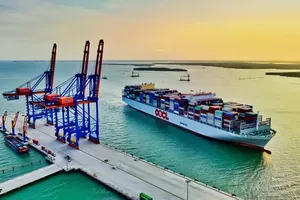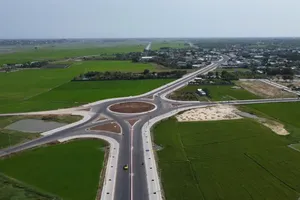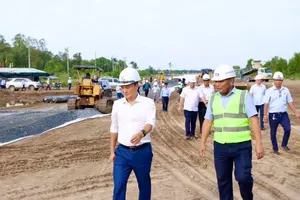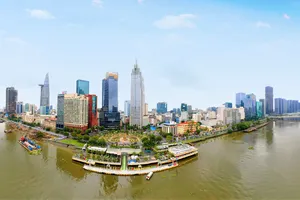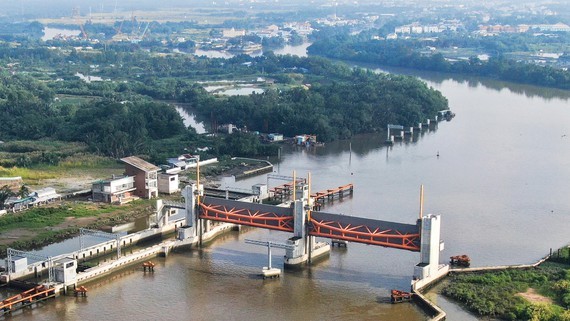 An anti-flood construction work in HCMC
An anti-flood construction work in HCMC
In the Southeast Asian country, wastewater is almost untreated and discharged directly into canals. So far, the rate of wastewater collection in urban areas is only 12.5 percent-15 percent.
According to the Ministry of Construction, the drainage system in most urban areas in Vietnam is mainly a common drainage system except for a few urban areas in the Central Province of Thua Thien -Hue, the Central Highlands Province of Lam Dong’s Da Lat City, the Southern Province of Binh Duong, and the Mekong Delta City of Can Tho that have a separate drainage system. Moreover, the rate of connection, collection, and treatment of wastewater in the current drainage system is still low.
Because the urban drainage system has been invested and built over different times, they are thus incomplete, asynchronous with many degraded sewer lines, so the drainage capacity is low. Additionally, the concreting of canals has limited water drainage causing waterlogged areas. Vietnam dumps almost all urban wastewater untreated into the environment.
According to some urban water supply and drainage companies, the current wastewater collection and treatment are still facing difficulties due to the shortage of wastewater treatment plants. Because of the rapid urban development, the collection and treatment of wastewater hardly keep up with fast urbanization; plus, the overlap of regulations among related agencies leads to low efficiency. A representative of the Hanoi Sewerage Company said that the urban infrastructure planning in Hanoi, including the drainage plan, has been approved, but the process has not been implemented synchronously; accordingly, it has been inefficient. Many urban areas have invested in a complete drainage system but not had a drainage system. In particular, key works and drainage systems have not kept up with the pace of urbanization.
While in Ho Chi Minh City, Deputy Director of HCMC Urban Drainage Company Ly Tho Dac said that the Plan 1547 and the Plan 752 on urban drainage were no longer appropriate, because of the increased rainfall and high tides which are often higher than predicted. In addition, the management of the decentralized drainage system for many units leads to overlapping and a lack of flexible coordination. For example, with the first level drainage system including rivers and canals, there are 4 units in charge of which are the HCMC Infrastructure Management Center under the management of the director of the Department of Construction, the Department of Agriculture and Rural Development, district people's committees and the Inland Waterway Management Region.
Mr. Dac suggested that Ho Chi Minh City need to consider adjusting and synchronizing the drainage planning to suit reality. Accordingly, it is necessary to develop detailed drainage plans for the coastal areas as well as carefully consider the basic plan when developing urban areas. The management work also needs to be studied according to a more suitable model. The drainage system must be managed by basin and each basin needs to be under the management of an agency.
Attracting social investment in the water industry is an urgent matter today. Accordingly, the social contributions to wastewater treatment not only reduce the financial burden on the State but also improve the capacity to provide water treatment services to the community.
Chairman of the Vietnam Water Supply and Sewerage Association Nguyen Ngoc Diep explained that currently, just 15 percent of wastewater has been treated in centralized treatment stations. For many years, calling for investment from businesses, especially private ones, has bumped into difficulties. Investment projects in wastewater treatment and drainage works require big capital while service prices are still low; subsequently, investors are indifferent to the field. Therefore, it is necessary to develop policies to encourage long-term investment as well as an open and transparent mechanism to select investors.
Head of the Ministry of Construction’s Sewerage Management and Wastewater Treatment Department Luong Ngoc Khanh said that currently, the Government is giving priority to water collection and drainage and wastewater treatment.
The Prime Minister assigned the Ministry of Construction to assume the prime responsibility for formulating the Law on Water Supply and Sewerage. The development of the Law on Water Supply and Sewerage is extremely necessary because it will be a state management tool for promoting the construction and development of a more synchronous and modern strategic infrastructure system for the industry.
Currently, 50 wastewater treatment plants with a total design capacity of about 1.8 million cubic meters a day are being designed and built. Approximately 80 percent of plants are designed and built using activated sludge technology. In the coming time, the ministry will calculate to adjust the factors of price, investment process to create favorable conditions to strongly attract businesses to participate, contributing to improving drainage infrastructure for cities and provinces especially big cities.


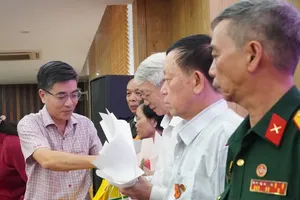


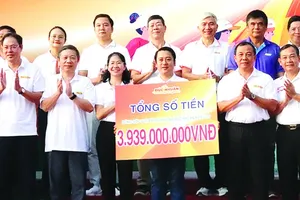

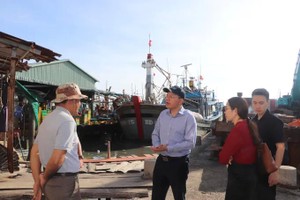
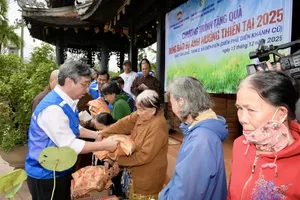

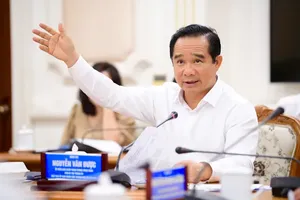
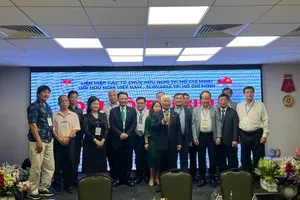

)
